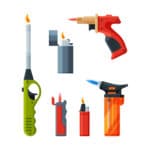In today’s unpredictable world, being prepared for emergencies and disasters is more important than ever. Having the right survival gear can make all the difference in ensuring your safety and well-being during challenging times. This comprehensive guide will explore the different types of survival gear and their purposes, helping you make informed decisions when assembling your own emergency kits.
Table of Contents
Survival Bags and Kits
Survival bags and kits are designed to provide you with essential items needed to survive in various emergency situations. Some common types include:
- Bug-out bags: These bags are designed to help you quickly evacuate and survive for 72 hours or more.
- Get-home bags: Smaller than bug-out bags, these kits are meant to help you safely return home during an emergency.
- Everyday carry (EDC) kits: These compact kits contain essential items you can carry daily for unexpected situations.
- Vehicle emergency kits: Designed to stay in your car, these kits provide essential items in case of breakdowns or accidents.
- Specialized survival kits: These kits focus on specific needs, such as first aid, fire starting, or water purification.
Shelter and Protection
Shelter and protection are crucial for surviving harsh weather conditions and maintaining body temperature. Essential gear in this category includes:
- Emergency tents and bivouacs: Lightweight and compact shelters that provide protection from the elements.
- Tarps and ponchos: Versatile items that can be used for shelter, ground cover, or rain protection.
- Sleeping bags and blankets: Insulated gear to keep you warm and comfortable in cold environments.
- Hand and body warmers: Disposable or reusable heat packs to prevent hypothermia.
- Protective clothing: Gear such as rain jackets, insulated clothing, and thermal underwear to shield you from extreme weather.
Water and Food
Access to clean water and sufficient food is vital for survival. Key items in this category include:
- Water filtration and purification systems: Devices like filters, purification tablets, or straw filters to ensure safe drinking water.
- Water containers and hydration packs: Durable bottles, canteens, or bladders to store and transport water.
- Emergency food rations and energy bars: Long-lasting, nutrient-dense food options to sustain energy levels.
- Portable stoves and cooking equipment: Compact stoves, fuel, and cookware for preparing meals in the outdoors.
- Fishing and hunting gear: Items like fishing lines, hooks, and snares to procure food from natural sources.

Staying oriented and being able to communicate are essential in emergency situations. Important gear includes:
- Compasses and GPS devices: Tools to help you navigate and find your way in unfamiliar terrain.
- Maps and navigation tools: Topographic maps, map cases, and map-reading tools to aid in navigation.
- Emergency radios and communication devices: Two-way radios, satellite phones, or emergency beacons for staying informed and calling for help.
- Signaling devices: Items like whistles, mirrors, or flares to attract attention and signal for rescue.
Lighting and Power
Having reliable light sources and power options is crucial for maintaining visibility and powering essential devices. Key items include:
- Flashlights and headlamps: Durable, long-lasting light sources for navigating in the dark.
- Lanterns and candles: Stationary light sources for illuminating campsites or shelters.
- Portable solar panels and chargers: Devices to harness solar energy for recharging batteries and electronic devices.
- Batteries and power banks: Spare batteries and portable power sources to keep devices running.
Tools and Multipurpose Items
Versatile tools and multipurpose items can greatly enhance your ability to tackle challenges in survival situations. Essential gear includes:
- Multi-tools and pocket knives: Compact tools that combine multiple functions, such as pliers, blades, and screwdrivers.
- Paracord and rope: Strong, lightweight cordage for building shelters, securing items, or creating snares.
- Duct tape and repair kits: Adhesive tape and small repair kits for fixing gear or creating improvised solutions.
- Fire starters and tinder: Reliable methods for starting fires, such as ferrocerium rods, matches, or tinder materials.
- Survival saws and axes: Tools for processing wood, clearing paths, or constructing shelters.
Customizing Your Survival Gear
When assembling your survival gear, it’s essential to consider your specific needs and environment. Factors to keep in mind include:
- Assessing your specific needs and environment: Consider the climate, terrain, and potential hazards in your area.
- Balancing weight, durability, and functionality: Choose gear that strikes a balance between being lightweight, long-lasting, and practical.
- Regularly reviewing and updating your gear: Periodically assess your kit to ensure items are in good condition and still relevant to your needs.
Conclusion
Having the right survival gear is essential for facing unexpected emergencies and disasters. By understanding the different types of gear available and their purposes, you can create personalized survival kits that cater to your specific needs and environment.
Remember, investing in quality survival gear is an investment in your safety and peace of mind. Start assembling or upgrading your survival gear today, and be prepared for whatever challenges may come your way.
For more information on survival gear essentials for extreme weather conditions, check out our in-depth guide to help you stay safe and prepared in even the harshest environments.







Leave a Reply